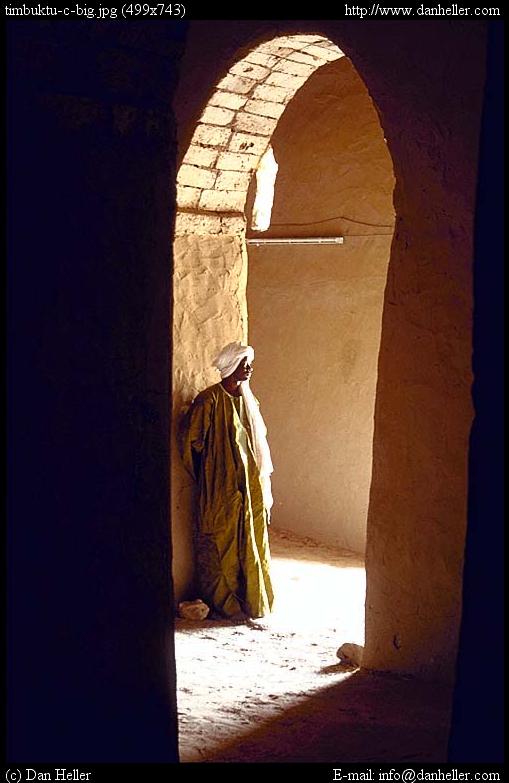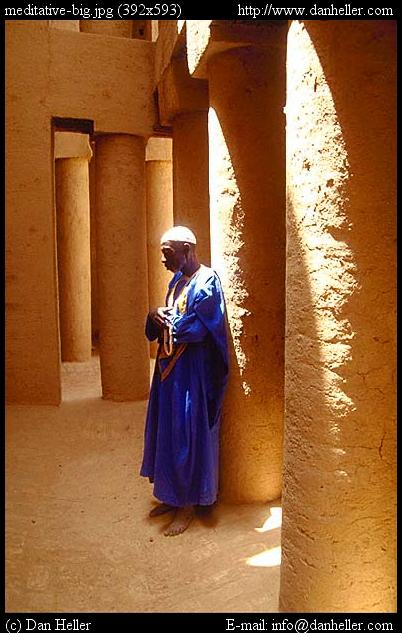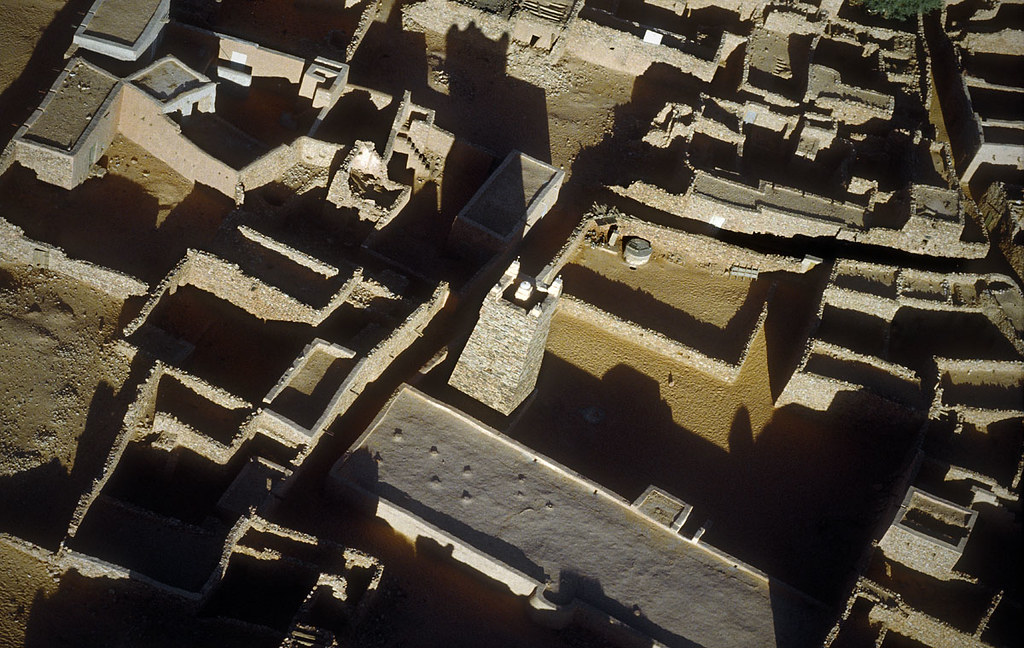You are using an out of date browser. It may not display this or other websites correctly.
You should upgrade or use an alternative browser.
You should upgrade or use an alternative browser.
Lets Talk African History:"Sahel" West African Civilizations
- Thread starter Bawon Samedi
- Start date
More options
Who Replied?The Middle Ages: Dictionary of World Biography, Volume 2
Seriously whoever has Mandinka ancestry or at least Western Sahelian ancestry should be very proud...

Mauritania’s Ancient Cities

The old cities of Ouadane, Chinguetti, Oualata and Tichitt are a vestige of a rich past, that of the Trans-Saharan trade which made these cities part of the city-relays between North Africa and West Africa through the Sahara. These cities had a profound religious and cultural influence.
The Towns of Chinguetti and Ouadane are in the province of Adrar, the town of Tichitt is in the province of Tagant and Oualata in the province of Hodh Ech Chargui. These four cities were relays on the long routes of the caravans, by which passed part of the trade between North Africa and the West Africa and lasted for centuries.
The arrival of Europeans on the Coasts of Africa gradually diverted commerce towards trading post’s which were created little by little on the coasts thus causing the ruin of these cities.
CHINGUETTI:
is 90 km from Atar, 90km and 120 km from Ouadane.
Atar is located less than 100 kilometres from, the capital of the area of Adrar, Chinguetti. It is now more accessible since the opening of the new trail, which is more viable than the old one, which goes through the Amogjar pass.
Regarded as the 7th Holy City of Islam, Chinguetti was a religious centre and famous intellectual with many Koranic schools and universities. The city attracted many scientists. A caravan city, Chinguetti played a significant commercial role. It was especially a stop over for the pilgrims going to Mecca.
The influence of Chinguetti largely exceeded the borders of current Mauritania. Its scholars were renowned as far as the Orient. As a matter of fact in the East Mauritania was known as the “Bilad Chinguetti”. The city reached its apogee during the 17th and 18th century.
Today Chinguetti is a city mostly buried under the dunes. It offers an impressive spectacle for the visitor who will note the inexorable advances of the desert. Some rare constructions still remain in the old city, of which the Mosque which dates from the XIII century with its rectangular minaret.
The Libraries of Chinguetti contain hundreds of invaluable manuscripts and well preserved according to traditional methods. They are jealously protected family libraries.
Recommended places to visit: the Mosque and the Libraries, the colonial Fort (Fort Saganne known from the film)
OUADANE:
is 120 km from Atar, approximately 4 hours of trail to Chinguetti; Atar is 200km.
Ouadane, or the City of the “ two oueds” is an old city whose foundation would date back to 1140. It knew its moments of splendours as a flourishing caravan city for the Trans-Saharan trade. It was the most significant city of the Mauritanian Sahara . Its rich palm plantations were famous. It had seven mosques and large libraries. The city was visited by the Portuguese as early as the 17th century. They established trade with the inhabitants. Ouadane reached its apogee during the 17th century. Its decline started with the massive diversion of the trade to the coasts by the Europeans towards the end of the 17th century.
UNESCO classifies the city as part of the World Inheritance to humanity. In the middle of the desert, Ouadane seems lost in the great expanse of the Sahara. The disappearance of caravans brought about the decline of this city.
Ouadane offers exceptional landscapes because of its geographical situation. Ouadane attracts visitors by the architecture of its houses built in cliffs. Today, tourism offers to Ouadane a new chance to rise again.
The local economy benefits from this activity with the multiplication of inns and small restaurants (gargotes).
Recommanded places to visit: the old Mosque, the palm plantation, the old city. As far as other surrounding sites to see somee vestiges it is necessary to go to Tin Labbe, there is also the mysterious Guelb Errichat, and the meteorite studied by Theodore Monod, El Beyedh and the Fort of El Ghallaouya. All that within a radius of 80 km maximum.
OUALATA:
is 90 km from Nema, Tichitt is 400 km and Tidjikja is 700 km.
It is located north of Nema at less than a hundred kilometres. Oualata is and old city is famous for its libraries, its immutable architecture and its mural decorations. It is one of the most beautiful towns of Mauritania because of its environment; it is at the foot of the Dhar. The stone-built houses have an original architecture. Paintings with various motifs decorate the houses.
Oualata was an active city during the Middle Age. It was built on the sites of Birou, another old city. It is thought that Oualata was built at the beginning of the 11th century. It was a caravan city and a stop over city. Oualata knew moments of splendours. It was a great arts and religious centre, competitor to Tombouctou.
Recommended places to visit: the Koranic school, the fort of Oualata, the Library, the works of decoration at private individuals.
To discover is the local gastronomy which very appreciated by all the visitors.
TICHIT:
is 400 km from Tidjikja of Oualata and 490 km to Nema.
One day of travel from Tidjikja or 12 to 14 hours. It is the most isolated old city. Classified as Inheritance to Humanity, Tichitt is a very old city. But its history is best-known beginning in the middle of the 12th century.
Caravan city, Tichitt was a commercial metropolis in the Sahara. With its rich silos, its irrigated agriculture, Tichitt were visited by caravans and merchants from Hodh, from Tagant but also of North Africa and West Africa. The city was also famous for its libraries, its scholars and for its 7 century old mosque.
Tichitt is in fact less known because it was not visited as frequently as other old cities. It is however a city representative of the old architecture. On the road between Tichitt and Tidjikja, there are several canyons, cliffs and cave paintings.
Places recommended to visit: the Mosque, Chorfa and Massena districts and in July, there is the Guetna or curing of the dates .
32 km away there is Aghreijitt and there one can visit sites dating from the Neolithic era, burials sites as well as its ruins and Mosque. In the middle of the cliffs one finds the remainders of old villages: potteries, archaeological objects and dont forget the salines(emersal), which are still exploited by the cameleers.
KOUMBI SALEH:
Kumbi Saleh near the malian border is the site of a ruined medieval town in south east Mauritania that may have been the capital of the Ghana(Wagadu) Empire.
From the ninth century, Arab authors mention the Ghana Empire in connection with the trans-Saharan gold trade. Al-Bakri who wrote in eleventh century described the capital of Ghana as consisting of two towns 6 miles apart, one inhabited by Muslim merchants and the other by the king of Ghana.
The discovery in 1913 of a 17th century African chronicle that gave the name of the capital as Koumbi led French archaeologists to the ruins at Koumbi Saleh. Excavations at the site have revealed the ruins of a large Muslim town with houses built of stone and a congregational mosque but no inscription to unambiguously identify the site as that of capital of Ghana. Ruins of the king's town described by al-Bakri have not been found. Radiocarbon dating suggests that the site was occupied between the late 9th and the 14th centuries.
source: Chinguitty voyages in Nouakchott, Mauritania, Africa
^^
All these ancient cities have been designated as UNESCO World heritage sites.
I will post a few pictures of these ancient cities and will try to find pictures of Koumbi Saleh ruins near the malian border which is the most ancient of them all.
YOU CAN FIND THE LOCATION OF THE FIVE ANCIENT CITIES ON THIS MAP
THERE ARE MORE BUT THESE ARE THE MOST IMPORTANT ONES


The old cities of Ouadane, Chinguetti, Oualata and Tichitt are a vestige of a rich past, that of the Trans-Saharan trade which made these cities part of the city-relays between North Africa and West Africa through the Sahara. These cities had a profound religious and cultural influence.
The Towns of Chinguetti and Ouadane are in the province of Adrar, the town of Tichitt is in the province of Tagant and Oualata in the province of Hodh Ech Chargui. These four cities were relays on the long routes of the caravans, by which passed part of the trade between North Africa and the West Africa and lasted for centuries.
The arrival of Europeans on the Coasts of Africa gradually diverted commerce towards trading post’s which were created little by little on the coasts thus causing the ruin of these cities.
CHINGUETTI:
is 90 km from Atar, 90km and 120 km from Ouadane.
Atar is located less than 100 kilometres from, the capital of the area of Adrar, Chinguetti. It is now more accessible since the opening of the new trail, which is more viable than the old one, which goes through the Amogjar pass.
Regarded as the 7th Holy City of Islam, Chinguetti was a religious centre and famous intellectual with many Koranic schools and universities. The city attracted many scientists. A caravan city, Chinguetti played a significant commercial role. It was especially a stop over for the pilgrims going to Mecca.
The influence of Chinguetti largely exceeded the borders of current Mauritania. Its scholars were renowned as far as the Orient. As a matter of fact in the East Mauritania was known as the “Bilad Chinguetti”. The city reached its apogee during the 17th and 18th century.
Today Chinguetti is a city mostly buried under the dunes. It offers an impressive spectacle for the visitor who will note the inexorable advances of the desert. Some rare constructions still remain in the old city, of which the Mosque which dates from the XIII century with its rectangular minaret.
The Libraries of Chinguetti contain hundreds of invaluable manuscripts and well preserved according to traditional methods. They are jealously protected family libraries.
Recommended places to visit: the Mosque and the Libraries, the colonial Fort (Fort Saganne known from the film)
OUADANE:
is 120 km from Atar, approximately 4 hours of trail to Chinguetti; Atar is 200km.
Ouadane, or the City of the “ two oueds” is an old city whose foundation would date back to 1140. It knew its moments of splendours as a flourishing caravan city for the Trans-Saharan trade. It was the most significant city of the Mauritanian Sahara . Its rich palm plantations were famous. It had seven mosques and large libraries. The city was visited by the Portuguese as early as the 17th century. They established trade with the inhabitants. Ouadane reached its apogee during the 17th century. Its decline started with the massive diversion of the trade to the coasts by the Europeans towards the end of the 17th century.
UNESCO classifies the city as part of the World Inheritance to humanity. In the middle of the desert, Ouadane seems lost in the great expanse of the Sahara. The disappearance of caravans brought about the decline of this city.
Ouadane offers exceptional landscapes because of its geographical situation. Ouadane attracts visitors by the architecture of its houses built in cliffs. Today, tourism offers to Ouadane a new chance to rise again.
The local economy benefits from this activity with the multiplication of inns and small restaurants (gargotes).
Recommanded places to visit: the old Mosque, the palm plantation, the old city. As far as other surrounding sites to see somee vestiges it is necessary to go to Tin Labbe, there is also the mysterious Guelb Errichat, and the meteorite studied by Theodore Monod, El Beyedh and the Fort of El Ghallaouya. All that within a radius of 80 km maximum.
OUALATA:
is 90 km from Nema, Tichitt is 400 km and Tidjikja is 700 km.
It is located north of Nema at less than a hundred kilometres. Oualata is and old city is famous for its libraries, its immutable architecture and its mural decorations. It is one of the most beautiful towns of Mauritania because of its environment; it is at the foot of the Dhar. The stone-built houses have an original architecture. Paintings with various motifs decorate the houses.
Oualata was an active city during the Middle Age. It was built on the sites of Birou, another old city. It is thought that Oualata was built at the beginning of the 11th century. It was a caravan city and a stop over city. Oualata knew moments of splendours. It was a great arts and religious centre, competitor to Tombouctou.
Recommended places to visit: the Koranic school, the fort of Oualata, the Library, the works of decoration at private individuals.
To discover is the local gastronomy which very appreciated by all the visitors.
TICHIT:
is 400 km from Tidjikja of Oualata and 490 km to Nema.
One day of travel from Tidjikja or 12 to 14 hours. It is the most isolated old city. Classified as Inheritance to Humanity, Tichitt is a very old city. But its history is best-known beginning in the middle of the 12th century.
Caravan city, Tichitt was a commercial metropolis in the Sahara. With its rich silos, its irrigated agriculture, Tichitt were visited by caravans and merchants from Hodh, from Tagant but also of North Africa and West Africa. The city was also famous for its libraries, its scholars and for its 7 century old mosque.
Tichitt is in fact less known because it was not visited as frequently as other old cities. It is however a city representative of the old architecture. On the road between Tichitt and Tidjikja, there are several canyons, cliffs and cave paintings.
Places recommended to visit: the Mosque, Chorfa and Massena districts and in July, there is the Guetna or curing of the dates .
32 km away there is Aghreijitt and there one can visit sites dating from the Neolithic era, burials sites as well as its ruins and Mosque. In the middle of the cliffs one finds the remainders of old villages: potteries, archaeological objects and dont forget the salines(emersal), which are still exploited by the cameleers.
KOUMBI SALEH:
Kumbi Saleh near the malian border is the site of a ruined medieval town in south east Mauritania that may have been the capital of the Ghana(Wagadu) Empire.
From the ninth century, Arab authors mention the Ghana Empire in connection with the trans-Saharan gold trade. Al-Bakri who wrote in eleventh century described the capital of Ghana as consisting of two towns 6 miles apart, one inhabited by Muslim merchants and the other by the king of Ghana.
The discovery in 1913 of a 17th century African chronicle that gave the name of the capital as Koumbi led French archaeologists to the ruins at Koumbi Saleh. Excavations at the site have revealed the ruins of a large Muslim town with houses built of stone and a congregational mosque but no inscription to unambiguously identify the site as that of capital of Ghana. Ruins of the king's town described by al-Bakri have not been found. Radiocarbon dating suggests that the site was occupied between the late 9th and the 14th centuries.
source: Chinguitty voyages in Nouakchott, Mauritania, Africa
^^
All these ancient cities have been designated as UNESCO World heritage sites.

I will post a few pictures of these ancient cities and will try to find pictures of Koumbi Saleh ruins near the malian border which is the most ancient of them all.
YOU CAN FIND THE LOCATION OF THE FIVE ANCIENT CITIES ON THIS MAP
THERE ARE MORE BUT THESE ARE THE MOST IMPORTANT ONES

Thanks breh. I speak french. My standard arabic and hassaniya arabic(wich is the local arab dialect) suck but I understand it a little bit. I also speak a little wolof, soninke and pulaar.













